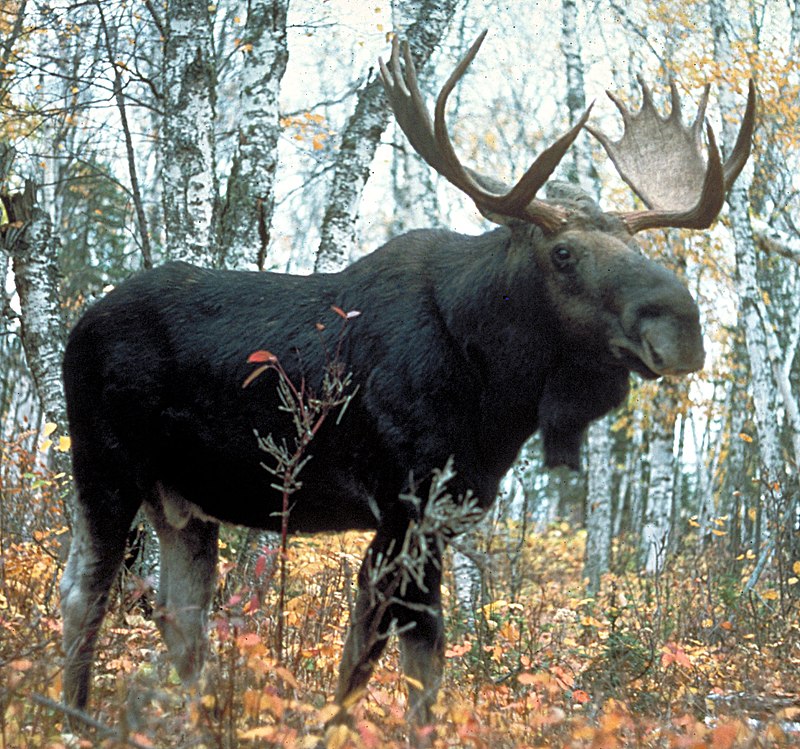Albanian mëz, mâz, Romanian mînz (a Dacian substrate loanword) 'foal' derive from a Paleo-Balkanic1 protoform *mendjo-2 related to Gaulish mandu-, borrowed in turn into Latin mannus3. Also related are Basque mando 'mule' (dialectally also 'sterile animal or woman'), presumably a Celtic loanword, as well as dialectal High German (Tirol) Manz, Menz 'sterile cow'4 and Italian manzo 'ox'5.
Probably also belong here Sanskrit mandurā 'stable for horses', mandira- 'dwelling, house' and Greek mándra 'pen, stable'. In my opinion, we're dealing with a Wanderwort of ultimate Altaic origin: Tungusic *manda-ksa 'Eurasian elk (Alces alces)', Mongolian *mandʒi 'male elk' and Turkic *buto 'young of camel' (EDAL 1253).
Basque idi 'ox' can also be derived from this etymology, assuming the following changes (not necessarily in that order): 1) loss of m-, 2) end > id, 3) -o > -i6.
_____________________________
2 T. Gaitzsch (2010): Das Pferd bei den Indogermanen: Sprachliche, kulturelle und archäologische Aspekte, p. 263-264.
3 X. Delamarre (2008): Dictionnaire de la langue gauloise, p. 214.
4 J. Pokorný (1958): Indogermanisches Etymologisches Wörterbuch, p. 729.

Proto-Afroasiatic: *muǯ- (?) ”cattle; ox”
ReplyDeleteEgyptian: md_.t (OK) “cattle”
East Chadic: *muǯ- “ox”
Mawa: mū́zo [Lk Barein]
Notes: Scarce data. Highly doubtful phonetically. (Militarev, Stolbova)
Omotic:
North (Nomotic):
Ometo: Wolaytta: miiza “cattle, ox” #m-z-
Gamo: míizi #m-z-
Gofa: mizzaa #m-z-
Zala: mizaa “ox” #m-z
Kullo-Konta: miza #m-z
Basketto: mizaanay; mizoo “ox” #m-z-
Zala: mizzaa #m-z-
South Ometo:
Zayse-Zergula: miis #m-z-
Koyra: míisse; misaa ”sterile female”; mínayʃi ”calf” #m-z-
Ganjule: miisi #m-z-
C’ara: məsina-meea ? cf. Egyptian > Coptic: m-s; mɪɪndi “cattle” #m-(z)-; miimaa #m-(z)-
Gimira: Benc Non: mit #m-(z)-
Janjero: Yemsa: miya #m-(z)-; masiinà ”barren” ? cf. Egyptian > Coptic: m-s
Kefoid: Kefa: miimoo #m-(z)-
Mocha: mimí #m-(z)-; mamó ”calf” #m-(z)-
Anfillo: mindzo #m-(z)-
Boro/ Shinasha: minjoo #m-(z)-; miizà (La) #m-(z)-; maseenà (La) ”barren” ? cf. Egyptian > Coptic: m-s
Mao: Mao of Bambeshi: ime #m-(z)-
Hozo: IImi #m-(z)-
Sezo: IImi #m-(z)-
Ganza: imi, ’emi #m-(z)-
All of the above Omotic forms are quoted from Roger Blench.
Mr. Blench’s commentary:
#m-(z)-. A diagnostic root for North Omotic except Dizoid. The Northern languages seem to have a clear C2 with a fricative, usually z/dz but surfacing as –s- in South Ometo. In a number of languages, especially Mao,
C2 is either absent or replaced by a different syllable. Hence I have surrounded the -z- of the proto-form with brackets to indicate this variable presence. It may be the original root was #mii and the -zV affix is related to the #zia forms for bull scattered across Omotic. This root seems very distinctive for Omotic and no cognates in Cushitic or Semitic are apparent.
My commentary:
These could actually be two different roots. With the #m-z- being related to the proto-form proposed by Militarev and Stolbova. Stolbova did all the Chadic work. It could likewise be as Mr. Blench stated. Also to add a further note to Mr. Blench’s commentary, in Egyptian you find an alternation between z ~ s. According to James P. Allen and Antonio Loprieno, Egyptian: ‘z’ later became ‘s’ as you see in the Coptic forms above. Note, Egyptian: "z/ s" man, someone, anyone, person, man of rank, no-one; Egyptian: "z-t/ s-t" woman. The above Afroasiatic > Omotic and the possibly related Militarev and Stolbova Afroasiatic forms may just be look-a-likes however.
I will answer the other posts shortly.
The above Afroasiatic > Omotic and the possibly related Militarev and Stolbova Afroasiatic forms may just be look-a-likes however.
ReplyDeleteYes, I think so. In my view, trying to reconstruct such "roots", like most macro-comparativists do, is pointless.
However, I think the Omotic forms (of course excluding the Mao ones) could be related to the Altaic ones. In fact, there're other lexical isoglosses between Omotic and "Eurasiatic".
Hmmm, forgot to respond.
ReplyDeleteIf that is true...isoglosses shared by Omotic and "Eurasiatic"...then that would be further evidence for Afroasiatic having originated outside Africa. I am starting to accept Militarev's proposal more and more as I learn more of Afroasiatic and other languages that are or were (possibly) relatively near it. How else do you explain the non-Semitic isoglosses shared by other ancient Middle Eastern languages (also IE) and Afroasiatic...many possibly at the proto-level or near proto-level. Also there is a Cushitic substrate in Arabia which may be a sign of back-migration. I must admit though, in northeast Africa there is the heavy presence of Afroasiatic toponyms and hydronyms at the deepest levels.